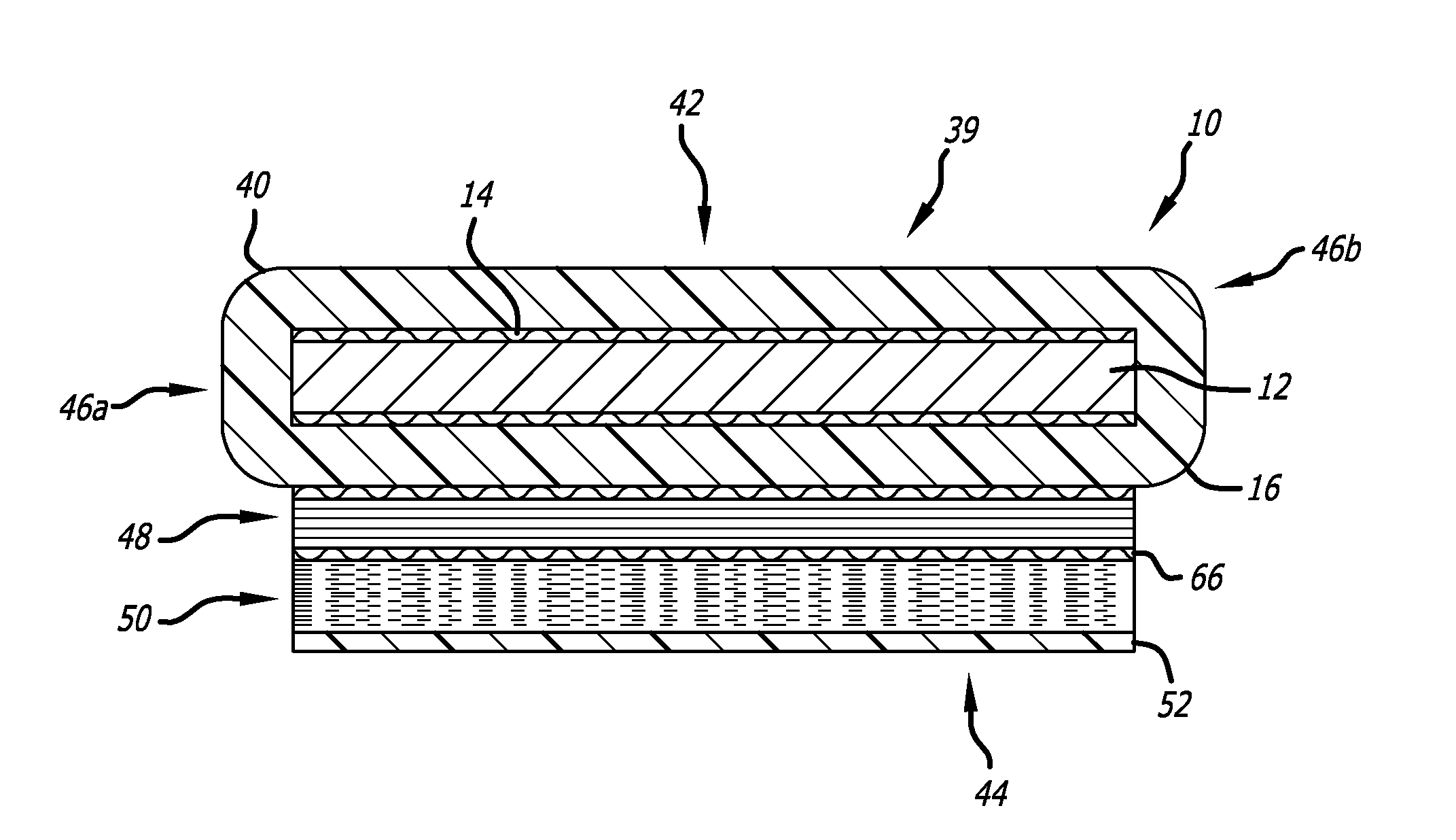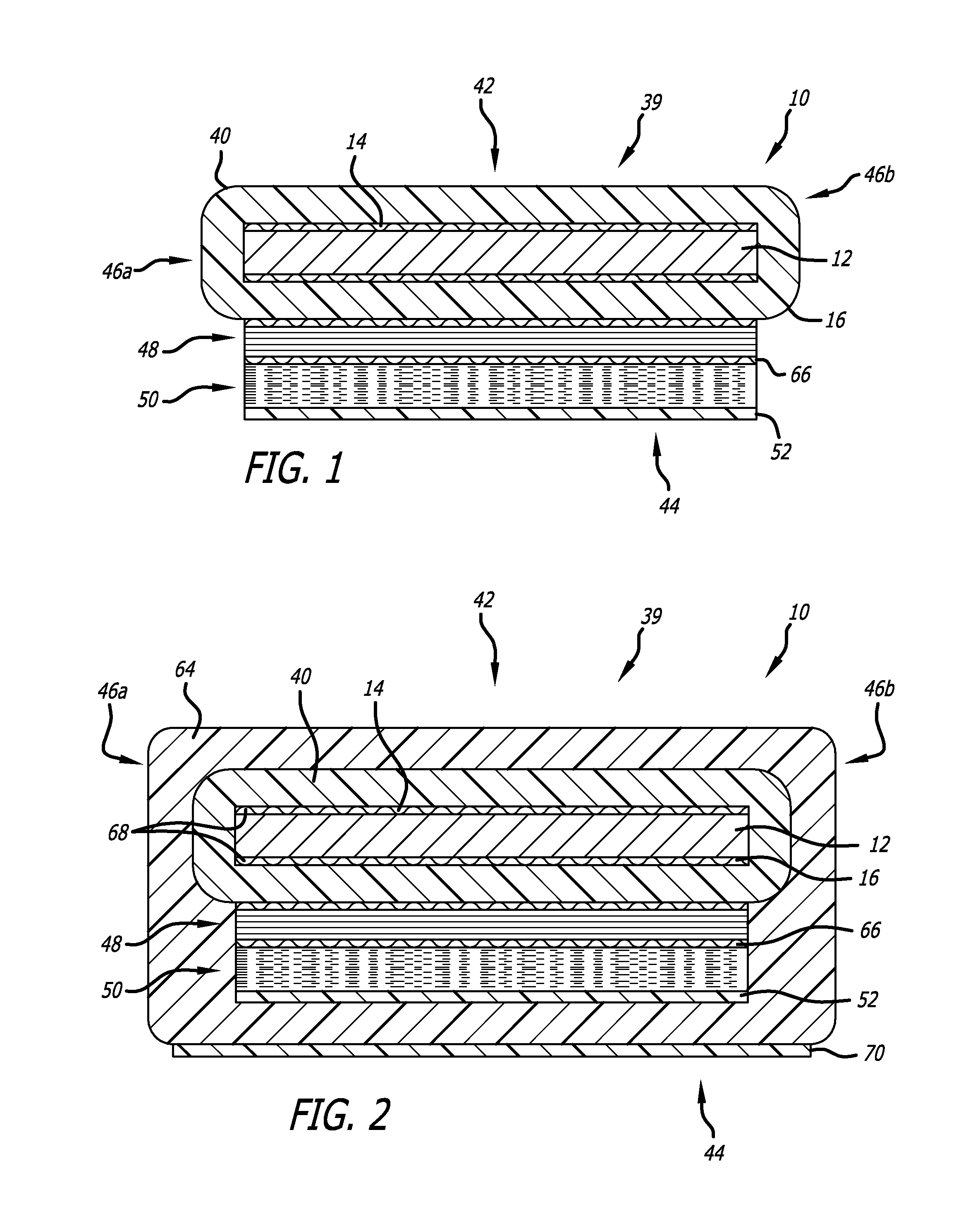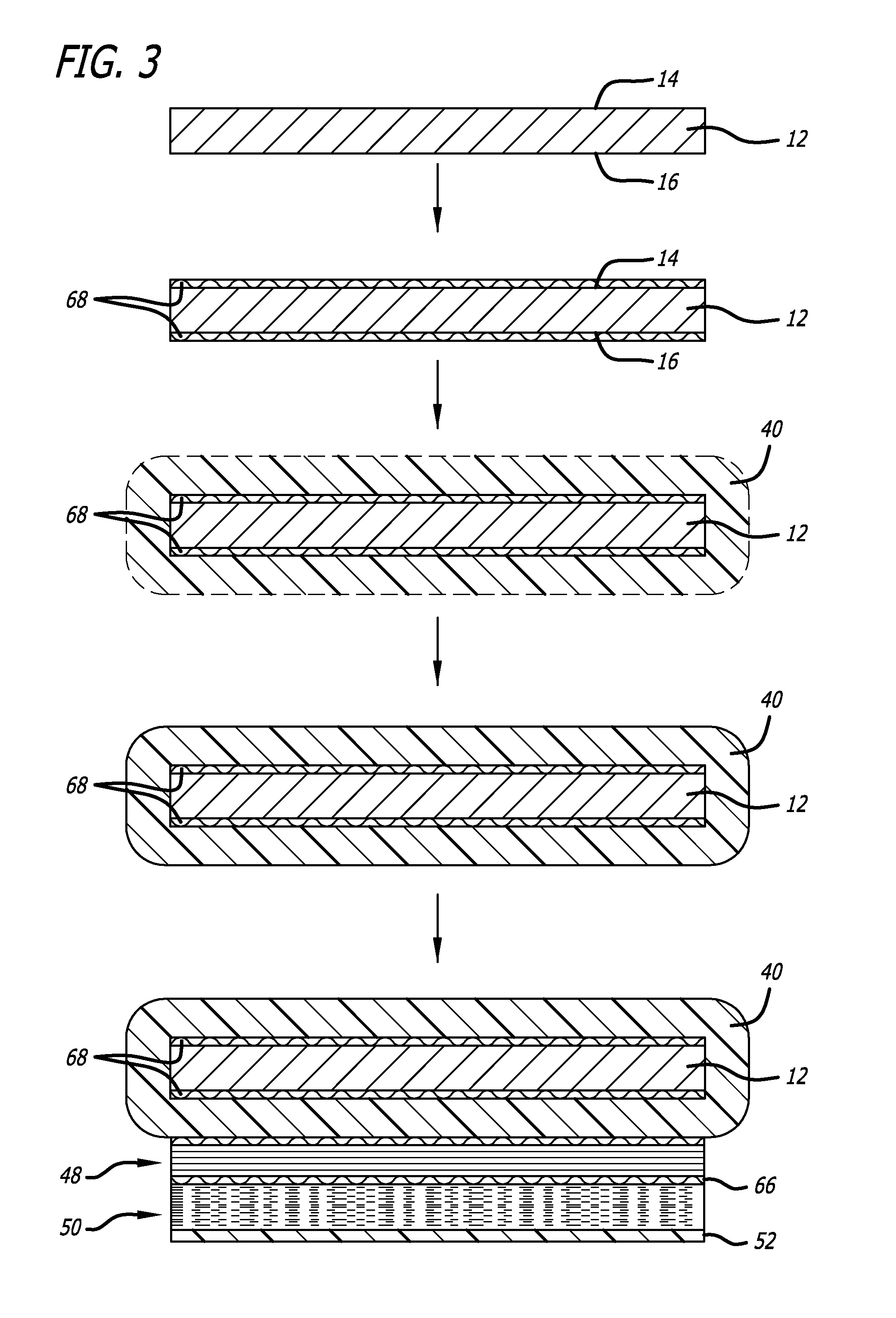Multi-layered ballistics armor
a multi-layer, ballistic armor technology, applied in the field of ballistic armor, can solve the problems that the effectiveness of conventional ceramic armor can quickly deteriorate, and achieve the effects of improving protection against multiple ballistic impacts, and minimizing the fragmentation of armor
- Summary
- Abstract
- Description
- Claims
- Application Information
AI Technical Summary
Benefits of technology
Problems solved by technology
Method used
Image
Examples
Embodiment Construction
[0033]While composite armor including a layer of ceramic between steel armor plates can be effective, there is a need to provide reduced weight composite armor, and it has been found that ceramic armor can quickly deteriorate significantly after a single ballistic impact to reduce the multiple impact protection of such ceramic based ballistics armor.
[0034]Accordingly, as is illustrated in the drawings, which are provided by way of example and not by way of limitation, the present invention provides for a multi-layered armor 10 stabilized to protect against fragmentation of the armor. The multi-layered armor includes an impact absorbing layer 12 having a strike face or front impact receiving side 14 and a rear side 16, so that a projectile received by the multi-layered armor proceeds from the front impact receiving side in a rearward direction toward the rear side. The multi-layered armor is preferably formed of a fragmenting material that is subject to fragmentation, spalling and sp...
PUM
| Property | Measurement | Unit |
|---|---|---|
| Force | aaaaa | aaaaa |
| Electrical resistance | aaaaa | aaaaa |
| Molecular weight | aaaaa | aaaaa |
Abstract
Description
Claims
Application Information
 Login to View More
Login to View More - R&D
- Intellectual Property
- Life Sciences
- Materials
- Tech Scout
- Unparalleled Data Quality
- Higher Quality Content
- 60% Fewer Hallucinations
Browse by: Latest US Patents, China's latest patents, Technical Efficacy Thesaurus, Application Domain, Technology Topic, Popular Technical Reports.
© 2025 PatSnap. All rights reserved.Legal|Privacy policy|Modern Slavery Act Transparency Statement|Sitemap|About US| Contact US: help@patsnap.com



